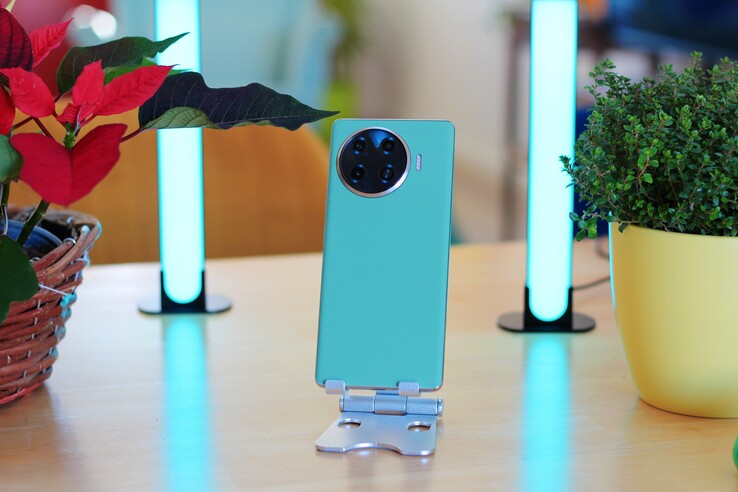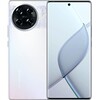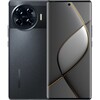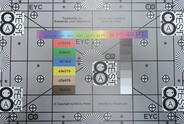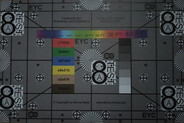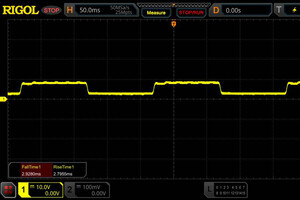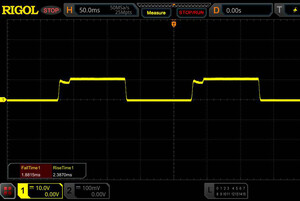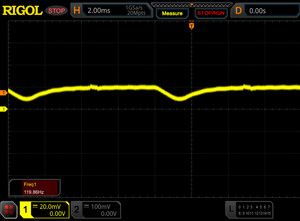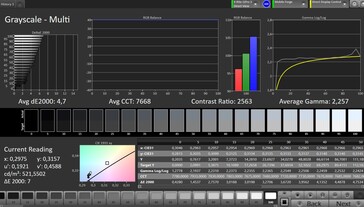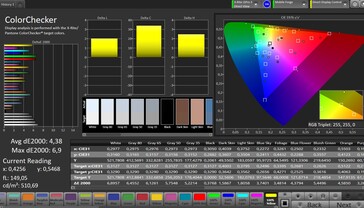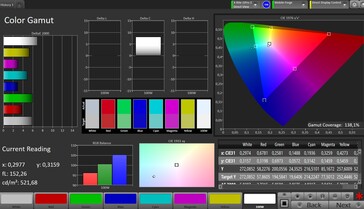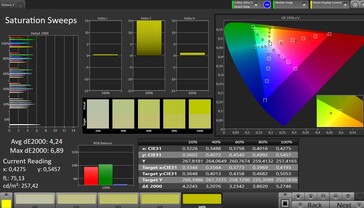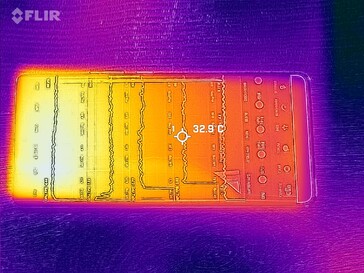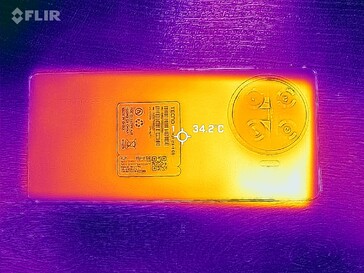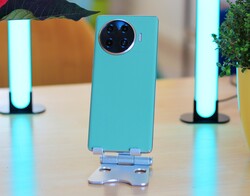Tecno Spark 20 Pro+ smartphone review – Surprisingly good cameras for under €200
Comparison with possible competitors
Rating | Date | Model | Weight | Storage | Dimensions | Resolution | Starting price |
|---|---|---|---|---|---|---|---|
| 81.2 % v7 (old) | 02 / 2024 | Tecno Spark 20 Pro+ Helio G99, Mali-G57 MP2 | 179 g | 256 GB UFS 2.2 Flash | 6.78" | 2436x1080 | |
| 81.9 % v7 (old) | 12 / 2022 | Motorola Moto G72 Helio G99, Mali-G57 MP2 | 166 g | 128 GB UFS 2.2 Flash | 6.60" | 2400x1080 | |
| 78.9 % v7 (old) | 11 / 2022 | Xiaomi Poco M5 Helio G99, Mali-G57 MP2 | 201 g | 128 GB UFS 2.2 Flash | 6.58" | 2408x1080 | |
| 80.2 % v7 (old) | 02 / 2024 | Xiaomi Redmi Note 13 4G SD 685, Adreno 610 | 188.5 g | 128 GB UFS 2.2 Flash | 6.67" | 2400x1080 |
Chassis and specifications – Slim and modern
The Tecno Spark 20 Pro+ is an extremely slim phone at just 7.6 mm (0.30 in) thick (not including the camera module). The rounded sides and slim frame make the phone look even svelter. Given the screen size, the device is also fairly lightweight at 179 g (0.39 lb). The Spark 20 Pro+ sits well in the hand and, other than a few rough edges, has nice build quality. The chassis is very sturdy and can be depressed slightly at most.
Provided courtesy of the manufacturer for review purposes, our green Tecno Spark 20 Pro+ has a pleather back with decorative embossed stitch detailing at the same height where the camera module is. In contrast, the black, white and gold variants don’t feature synthetic leather but instead sport a shiny or, in the case of the black model, matt finish.
The camera module is round on all colourways and offset significantly to the left. Though fans of symmetry probably aren't going to be pleased, it makes the device highly distinctive. The slim bezel around the display also gives the phone a modern look.
For around €200 (US$216), you are getting a pretty generous 256 GB of storage and 8 GB of RAM. There is NFC on board, but no dedicated audio jack. You’ll have to use the USB-C port for wired audio.
The Spark 20 Pro+ can take up to 2 SIM cards, but doesn’t have a microSD slot for storage expansion.
Connectivity, software and operation – With Android 14
The Tecno Spark 20 Pro+ comes with WiFi 5 and is thus on a par with other phones of its class. Wireless transfer speeds, which we evaluated with the help of our reference router (Asus ROG Rapture AXE 11000), are at the same level as what the competitors can do. The speeds are also fairly stable throughout our testing, apart from the slightly weaker receive rates at the start.
The Tecno phone is 4G-enabled and supports a wide range of essential frequencies. This means you can use the phone in Central Europe without any issues. However, if you wish to travel further, you should check whether the phone can connect to an LTE network in the destination country. Reception was good during our roughly two-week test period, but couldn’t match the signal strength of high-end phones.
The operating system is called HiOS 13.6 and is based Android 14. At the time of this review, the security patches were dated December 2023 and thus still reasonably up-to-date. You’ll also have to deal with third-party apps right out of the box, though they are easy enough to uninstall. Around the front camera is a feature similar to Apple’s Dynamic Island. It is only visible as needed and provides extra information, for example, when you are unlocking the phone by face recognition.
In Europe, there might be problems with warranty and repairs because Tecno Mobile still doesn’t have an official branch in the region. The retailer remain the only place to approach for help.
The 120Hz screen is able to register touch input 240 times per second. It is thus very responsive in addition to being accurate to use and sensitive down to its corners. If desired, you can even adjust scrolling and animations to suit your preferences.
The fingerprint scanner is invisible and hidden behind the display. Once a finger is registered, the scanner is able to detect it very quickly and reliably. Face recognition works dependably as well, but the method isn’t entirely secure because the solution doesn’t have a 3D sensor.
| Networking | |
| iperf3 transmit AXE11000 | |
| Xiaomi Poco M5 | |
| Tecno Spark 20 Pro+ | |
| Xiaomi Redmi Note 13 4G | |
| Motorola Moto G72 | |
| iperf3 receive AXE11000 | |
| Xiaomi Poco M5 | |
| Motorola Moto G72 | |
| Tecno Spark 20 Pro+ | |
| Xiaomi Redmi Note 13 4G | |
Cameras – Good image quality for the money
For the camera setup on the Spark 20 Pro+, Tecno has placed all their focus on the 108MP main shooter. Although the camera module appears to have four lens openings, you’ll notice one of them is completely sealed upon closer inspection. The other two cameras comprise a very low-res supporting camera for depth-of-field effects in portrait, and a macro camera that likewise only produces fairly low-res images.
Whilst there isn’t any ultrawide camera, the main shooter captures pretty decent photos for how much the phone costs. We like how sharp images look, and the detail level is slightly higher than on other phones in this price bracket. You shouldn’t expect to do high-end photography with the device; some parts on an image could also be more dynamic. But overall, photos look high-quality for a €200 phone.
Even though you can barely make out anything in very dark areas of a low-light photo, sharpness is good as a whole. The tests conducted in our lab under controlled lighting conditions also went delightfully well: there were only minor contrast issues under full studio lighting. Despite being much grainier and blurrier, the image captured at 1 lux still turned out fairly readable.
The 32MP front camera produces good selfies that can be blown up with no problem.
Image comparison
Choose a scene and navigate within the first image. One click changes the position on touchscreens. One click on the zoomed-in image opens the original in a new window. The first image shows the scaled photograph of the test device.
Main camera: plantMain camera: surroundingsMain camera: low light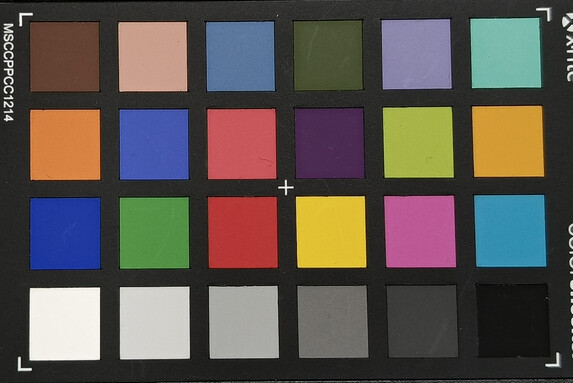
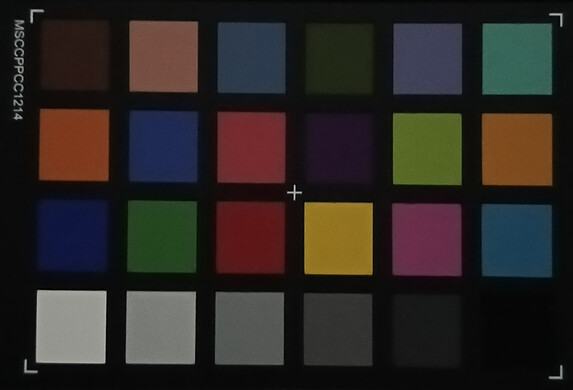
Display – Bright, but not so well calibrated
The Tecno Spark 20 Pro+ boasts an AMOLED display with Full HD+ resolution and a relatively large diagonal of 6.78 inches. It reached a high peak average brightness of 906 cd/m² in a bright environment and with the ambient light sensor enabled. This means you can enjoy HDR contents on the phone as well.
For our measurements with a spectrophotometer, we used the “Original Color” setting, which shows muted colours on the AMOLED display. Even so, the CalMAN software reported slightly higher colour differences, especially when it comes to vivid shades. There is even a noticeable blue tint on light shades of grey.
Capable of running at up to 120Hz, the display can reproduce fast motions without stuttering and offers fast response times. PWM flicker is particularly visible at low brightness levels and can make it harder for sensitive individuals to use the screen.
| |||||||||||||||||||||||||
Brightness Distribution: 93 %
Center on Battery: 942 cd/m²
Contrast: ∞:1 (Black: 0 cd/m²)
ΔE ColorChecker Calman: 4.38 | ∀{0.5-29.43 Ø4.78}
ΔE Greyscale Calman: 4.7 | ∀{0.09-98 Ø5}
138.1% sRGB (Calman 2D)
Gamma: 2.257
CCT: 7668 K
| Tecno Spark 20 Pro+ AMOLED, 2436x1080, 6.8" | Motorola Moto G72 P-OLED, 2400x1080, 6.6" | Xiaomi Poco M5 IPS, 2408x1080, 6.6" | Xiaomi Redmi Note 13 4G AMOLED, 2400x1080, 6.7" | |
|---|---|---|---|---|
| Response Times | 70% | -422% | 62% | |
| Response Time Grey 50% / Grey 80% * (ms) | 5.7 ? | 1.5 ? 74% | 33 ? -479% | 2.2 ? 61% |
| Response Time Black / White * (ms) | 4.3 ? | 1.5 ? 65% | 20 ? -365% | 1.6 ? 63% |
| PWM Frequency (Hz) | 119.9 | 180 | 389.2 | |
| Screen | 5% | 15% | 36% | |
| Brightness middle (cd/m²) | 942 | 992 5% | 400 -58% | 940 0% |
| Brightness (cd/m²) | 906 | 980 8% | 396 -56% | 922 2% |
| Brightness Distribution (%) | 93 | 92 -1% | 96 3% | 96 3% |
| Black Level * (cd/m²) | 0.27 | |||
| Colorchecker dE 2000 * | 4.38 | 4.56 -4% | 1.26 71% | 1.2 73% |
| Colorchecker dE 2000 max. * | 6.9 | 7.96 -15% | 2.45 64% | 2.28 67% |
| Greyscale dE 2000 * | 4.7 | 3.1 34% | 1.5 68% | 1.4 70% |
| Gamma | 2.257 97% | 2.233 99% | 2.298 96% | 2.27 97% |
| CCT | 7668 85% | 7098 92% | 6658 98% | 6503 100% |
| Contrast (:1) | 1481 | |||
| Total Average (Program / Settings) | 38% /
21% | -204% /
-94% | 49% /
42% |
* ... smaller is better
Display Response Times
| ↔ Response Time Black to White | ||
|---|---|---|
| 4.3 ms ... rise ↗ and fall ↘ combined | ↗ 1.9 ms rise | |
| ↘ 2.4 ms fall | ||
| The screen shows very fast response rates in our tests and should be very well suited for fast-paced gaming. In comparison, all tested devices range from 0.1 (minimum) to 240 (maximum) ms. » 16 % of all devices are better. This means that the measured response time is better than the average of all tested devices (20.2 ms). | ||
| ↔ Response Time 50% Grey to 80% Grey | ||
| 5.7 ms ... rise ↗ and fall ↘ combined | ↗ 2.9 ms rise | |
| ↘ 2.8 ms fall | ||
| The screen shows very fast response rates in our tests and should be very well suited for fast-paced gaming. In comparison, all tested devices range from 0.165 (minimum) to 636 (maximum) ms. » 17 % of all devices are better. This means that the measured response time is better than the average of all tested devices (31.6 ms). | ||
Screen Flickering / PWM (Pulse-Width Modulation)
| Screen flickering / PWM detected | 119.9 Hz | ||
The display backlight flickers at 119.9 Hz (worst case, e.g., utilizing PWM) . The frequency of 119.9 Hz is very low, so the flickering may cause eyestrain and headaches after extended use. In comparison: 53 % of all tested devices do not use PWM to dim the display. If PWM was detected, an average of 8118 (minimum: 5 - maximum: 343500) Hz was measured. | |||
Performance, emissions and battery life – Power typical of its class
The Tecno Spark 20 Pro+ features the Mediathek Helio G99 – a popular SoC in this price bracket that mostly offers enough performance for reasonably smooth system operation. It only starts chugging when taking on demanding apps.
Nowadays, most phones in this price range come equipped with UFS 2.2 storage. This is also the case with the Tecno Spark 20 Pro+. The built-in storage enables rather fast data transfer speeds and fairly short loading times in apps.
Under prolonged load, the phone’s surface became noticeably warm, reaching as high as 41.1°C (106°F). This nevertheless isn't a cause for concern. The 3DMark stress tests revealed that performance doesn’t suffer even under sustained load: the phone continued to achieve the same frame rates even after 20 runs.
The Spark 20 Pro+ comes with stereo speakers that only get moderately loud but sound quite balanced overall. They don’t experience clipping even at max volume and offer an absolutely full sound. Of course, you shouldn’t expect any real bass from them. If you want to hear bass, it’s necessary to connect external speakers or a pair of headphones via the USB-C port or Bluetooth. The phone supports a wide range of codecs for wireless audio transmission, including cutting-edge ones like LHDC V5 and Opus. This means it’s possible to transmit hi-res audio.
The built-in battery has a capacity of 5,000 mAh, which is a pretty standard size for most modern smartphones. The Spark 20 Pro+ lasted a solid 15h 46min in our Wi-Fi test, comparable with other phones of its class. The device can charge at up to 33 watts and thus takes less than two hours to become fully charged.
| Tecno Spark 20 Pro+ | Motorola Moto G72 | Xiaomi Poco M5 | Xiaomi Redmi Note 13 4G | Average 256 GB UFS 2.2 Flash | Average of class Smartphone | |
|---|---|---|---|---|---|---|
| AndroBench 3-5 | -12% | 7% | -14% | -3% | 82% | |
| Sequential Read 256KB (MB/s) | 999.6 | 868.5 -13% | 976.4 -2% | 909.8 -9% | 903 ? -10% | 2223 ? 122% |
| Sequential Write 256KB (MB/s) | 781.3 | 497.5 -36% | 870.7 11% | 606.3 -22% | 727 ? -7% | 1838 ? 135% |
| Random Read 4KB (MB/s) | 219.4 | 231.4 5% | 247.6 13% | 177.1 -19% | 226 ? 3% | 295 ? 34% |
| Random Write 4KB (MB/s) | 242.6 | 230.2 -5% | 257.8 6% | 228 -6% | 247 ? 2% | 335 ? 38% |
(±) The maximum temperature on the upper side is 41.1 °C / 106 F, compared to the average of 35.2 °C / 95 F, ranging from 21.9 to 247 °C for the class Smartphone.
(+) The bottom heats up to a maximum of 39.5 °C / 103 F, compared to the average of 34 °C / 93 F
(+) In idle usage, the average temperature for the upper side is 24.7 °C / 76 F, compared to the device average of 32.9 °C / 91 F.
3DMark Wild Life Stress Test
Tecno Spark 20 Pro+ audio analysis
(±) | speaker loudness is average but good (77 dB)
Bass 100 - 315 Hz
(-) | nearly no bass - on average 21.2% lower than median
(±) | linearity of bass is average (10.9% delta to prev. frequency)
Mids 400 - 2000 Hz
(±) | higher mids - on average 7.8% higher than median
(±) | linearity of mids is average (7.1% delta to prev. frequency)
Highs 2 - 16 kHz
(+) | balanced highs - only 4.3% away from median
(±) | linearity of highs is average (8.7% delta to prev. frequency)
Overall 100 - 16.000 Hz
(±) | linearity of overall sound is average (23.1% difference to median)
Compared to same class
» 52% of all tested devices in this class were better, 7% similar, 42% worse
» The best had a delta of 11%, average was 35%, worst was 134%
Compared to all devices tested
» 68% of all tested devices were better, 5% similar, 27% worse
» The best had a delta of 4%, average was 24%, worst was 134%
Xiaomi Redmi Note 13 4G audio analysis
(±) | speaker loudness is average but good (76.2 dB)
Bass 100 - 315 Hz
(-) | nearly no bass - on average 23.1% lower than median
(±) | linearity of bass is average (8% delta to prev. frequency)
Mids 400 - 2000 Hz
(±) | higher mids - on average 6.2% higher than median
(±) | linearity of mids is average (7.3% delta to prev. frequency)
Highs 2 - 16 kHz
(±) | higher highs - on average 5.2% higher than median
(±) | linearity of highs is average (10.9% delta to prev. frequency)
Overall 100 - 16.000 Hz
(±) | linearity of overall sound is average (22.5% difference to median)
Compared to same class
» 48% of all tested devices in this class were better, 6% similar, 46% worse
» The best had a delta of 11%, average was 35%, worst was 134%
Compared to all devices tested
» 65% of all tested devices were better, 6% similar, 29% worse
» The best had a delta of 4%, average was 24%, worst was 134%
| Battery Runtime - WiFi Websurfing | |
| Average of class Smartphone (12.1 - 54.1, n=209, last 2 years) | |
| Tecno Spark 20 Pro+ | |
| Motorola Moto G72 | |
| Xiaomi Poco M5 | |
| Xiaomi Redmi Note 13 4G | |
Pros
Cons
Verdict – High-quality phone for a small price
The Tecno Spark 20 Pro+ positively surprised us. For less than €200 (US$216), you’re getting plenty of storage as well as a camera system capable of producing sharp images and great selfies. The camera is still able deliver acceptable photos even in situations with little light. The device boasts a bright OLED screen and decent speakers to boot.
The phone isn’t too heavy and has a modern appearance with its rounded sides and slim bezel. Build quality is solid, but you can tell by some rough edges that the Spark 20 Pro+ is, alas, not very expensive.
You might also be miffed about the lack of a microSD card slot and an ultrawide camera, which is practically a standard feature in this price range. That said, the phone still represents a good overall package when taken as a whole. Consumers in Europe and North America should nonetheless keep in mind the somewhat murky warranty situation.
The Tecno Spark 20 Pro+ is affordable without feeling cheap at all: the camera, bright display and modern design are compelling.
One potential alternative is the also recently released Xiaomi Redmi Note 13 4G, but it has slightly shorter battery life.
Price and availability
The Tecno Spark 20 Pro+ is difficult to find in Europe and North America right now. You can visit the official product page for more information.
Tecno Spark 20 Pro+
- 02/20/2024 v7 (old)
Florian Schmitt
Transparency
The selection of devices to be reviewed is made by our editorial team. The test sample was provided to the author as a loan by the manufacturer or retailer for the purpose of this review. The lender had no influence on this review, nor did the manufacturer receive a copy of this review before publication. There was no obligation to publish this review. As an independent media company, Notebookcheck is not subjected to the authority of manufacturers, retailers or publishers.
This is how Notebookcheck is testing
Every year, Notebookcheck independently reviews hundreds of laptops and smartphones using standardized procedures to ensure that all results are comparable. We have continuously developed our test methods for around 20 years and set industry standards in the process. In our test labs, high-quality measuring equipment is utilized by experienced technicians and editors. These tests involve a multi-stage validation process. Our complex rating system is based on hundreds of well-founded measurements and benchmarks, which maintains objectivity. Further information on our test methods can be found here.




